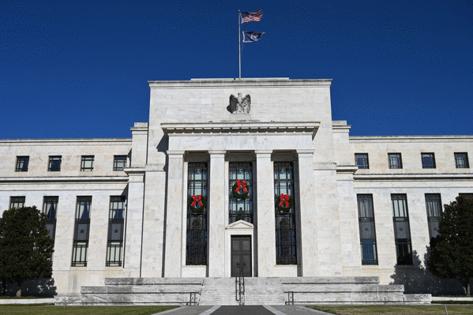Fed rate cut to mark pivot toward job market: Decision-day guide
Published in Business News
Federal Reserve officials are expected to backstop a faltering U.S. labor market by lowering interest rates Wednesday, marking a shift after worries about tariff-induced inflation kept them on hold all year.
The policy pivot will take place amid unrelenting pressure from President Donald Trump, who has pushed for a “big cut” this week. Political drama has also introduced suspense about who would even be in attendance at this week’s policy meeting, though the lineup was likely finalized Monday night when the Senate confirmed a new Fed governor and a late court ruling allowed another official to remain in place for now.
Those intrigues aside, investors will be looking to Fed Chair Jerome Powell and parsing fresh economic projections for clues on the likely path for interest rates in the months ahead. The projections will be published at 2 p.m. in Washington alongside the rate decision, and Powell’s press conference will begin 30 minutes later.
Fed watchers expect differing views on employment and inflation will keep officials from promising an aggressive pace of rate cuts.
“Every cut is more difficult than the previous cut unless the labor market shows signs of continued deterioration,” said Aditya Bhave, senior U.S. economist at Bank of America.
Voter mix
While the central bank’s rate decision will be the primary focus for many Fed watchers, extraordinary circumstances surrounding the makeup of the rate-setting Federal Open Market Committee have dominated the news ahead of the meeting.
Trump ally Stephen Miran, whom the president nominated to fill an open seat at the central bank, was sworn in on Tuesday morning just in time for the gathering. Miran has drawn fire for refusing to resign from his position as chair of the White House Council of Economic Advisers. He has, instead, taken unpaid leave, calling into question his commitment to act independently while at the Fed.
Meanwhile a divided appeals court ruled late Monday that Fed Governor Lisa Cook could continue working at the central bank while her lawsuit challenging Trump’s move to fire her proceeds in the courts. The Trump administration intends to ask the Supreme Court to let the president oust her over allegations of mortgage fraud, which Cook has denied.
The exact makeup of voters, and whether Cook is ultimately allowed to remain at the Fed, is unlikely to meaningfully alter the course of interest rates in the next several months, said Kathy Bostjancic, chief economist for Nationwide. But if the president succeeds in replacing Cook, whose seat on the Fed board is not set to expire until 2038, it could influence the longer-term trajectory for rates.
Trump will also get to name a new Fed chair after Powell’s term at the helm ends in May. Miran’s seat expires at the end of January, but he could be nominated for a longer-term slot or stay on at the Fed until Trump names someone else to the position.
Powell will likely face questions about all of this, and whether any of it constitutes a threat to the Fed’s independence from the White House, during his press conference.
Dissents
Fed watchers see the potential for dissents over the expected quarter-point cut from both sides of the debate, with some officials possibly supporting a deeper reduction and others preferring to hold rates steady.
The disagreements all come down to whether policymakers are more concerned that the labor market is on the cusp of a sharp deterioration or are primarily worried that inflation could accelerate due to tariffs.
Two Fed governors, Christopher Waller and Michelle Bowman, voted against the July decision to leave rates unchanged, citing concerns about the labor market. Both were appointed by Trump during his first term in office.
Data released since that gathering showed job growth has slowed sharply, leading to more widespread worries about a potential downturn.
At the same time, inflation remains above target, though the pass-through from tariffs to final prices has been more moderate than initially feared, said Bostjancic.
If three officials were to dissent, it would be the first time since September 2019 that more than two officials voted against a rate decision.
New forecasts
Economists surveyed by Bloomberg News largely expect officials to pencil in two rate reductions for this year, in line with projections submitted in June. That would imply only one more cut after this week’s meeting, either in October or in December.
The June forecasts for inflation and unemployment have held up well, giving officials little reason to add more cuts to their baseline outlook, said Bhave.
But a sizable minority of economists polled — more than 40% — see officials writing down three rate reductions for 2025. The projections will also reveal how much easing officials anticipate next year, and how they see inflation and unemployment progressing.
©2025 Bloomberg L.P. Visit bloomberg.com. Distributed by Tribune Content Agency, LLC.












Comments